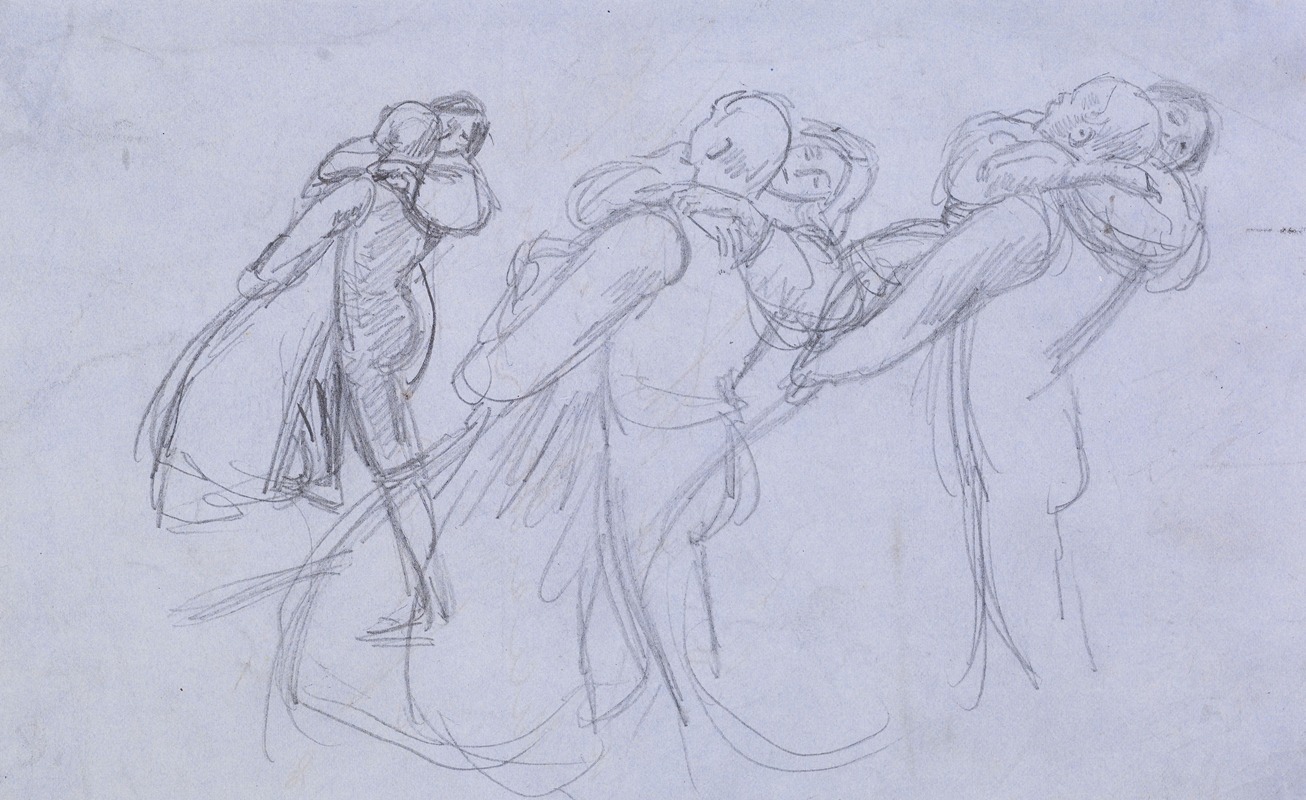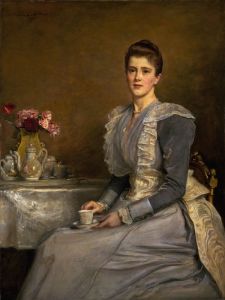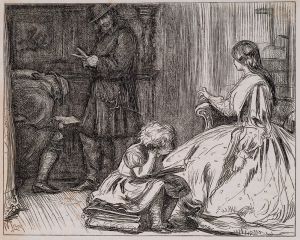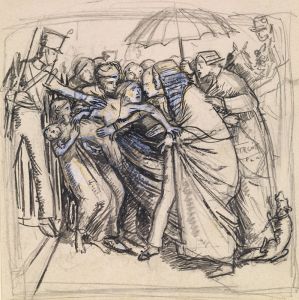
The Crown of Love by George Meredith – Three Studies of the Lover carrying the Princess up the Hill
A hand-painted replica of Sir John Everett Millais’s masterpiece The Crown of Love by George Meredith – Three Studies of the Lover carrying the Princess up the Hill, meticulously crafted by professional artists to capture the true essence of the original. Each piece is created with museum-quality canvas and rare mineral pigments, carefully painted by experienced artists with delicate brushstrokes and rich, layered colors to perfectly recreate the texture of the original artwork. Unlike machine-printed reproductions, this hand-painted version brings the painting to life, infused with the artist’s emotions and skill in every stroke. Whether for personal collection or home decoration, it instantly elevates the artistic atmosphere of any space.
"The Crown of Love by George Meredith – Three Studies of the Lover carrying the Princess up the Hill" is a painting by Sir John Everett Millais, an influential English painter and one of the founders of the Pre-Raphaelite Brotherhood. This artwork is a visual interpretation of a poem by George Meredith, a Victorian novelist and poet. The painting captures a specific moment from Meredith's poem, which is part of his collection "Poems and Lyrics of the Joy of Earth" published in 1883.
Sir John Everett Millais was known for his detailed and realistic style, often drawing inspiration from literature, history, and nature. His works frequently depicted scenes from Shakespeare, Tennyson, and other literary figures, making him a prominent figure in the Victorian art scene. The Pre-Raphaelite Brotherhood, which he co-founded in 1848, aimed to return to the detail, intense colors, and complex compositions of Quattrocento Italian art.
"The Crown of Love" painting is divided into three distinct panels, each illustrating a different stage of the lover's journey as he carries the princess up a hill. This triptych format allows Millais to explore the narrative progression and emotional depth of the poem through a series of interconnected scenes. The lover's determination and the princess's vulnerability are central themes, reflecting the romantic and often idealized nature of Pre-Raphaelite art.
In the first panel, the lover is seen beginning his ascent, carrying the princess with a sense of purpose and resolve. The background is lush and green, symbolizing the beginning of their journey and the hope that accompanies it. Millais's attention to detail is evident in the intricate depiction of the foliage and the characters' expressions.
The second panel shows the lover midway up the hill, where the climb becomes steeper and more challenging. The lover's face shows signs of strain, and the princess appears more dependent on his strength. The landscape around them becomes more rugged, emphasizing the increasing difficulty of their journey. This middle section captures the struggle and perseverance required to achieve their goal.
In the final panel, the lover reaches the top of the hill, with the princess still in his arms. The summit represents the culmination of their efforts and the triumph of love and determination. The background opens up to a panoramic view, suggesting a sense of accomplishment and the promise of a new beginning. The expressions of the characters reflect relief and joy, completing the narrative arc of the poem.
Millais's use of color, light, and composition in "The Crown of Love" enhances the emotional impact of the scenes. His meticulous technique and ability to convey complex emotions through his subjects make this painting a notable example of Pre-Raphaelite art. The work not only illustrates Meredith's poem but also stands as a testament to Millais's skill in blending literary inspiration with visual artistry.
"The Crown of Love" remains an important piece in the study of Victorian art and literature, showcasing the collaborative spirit between artists and writers of the time. It exemplifies the Pre-Raphaelite Brotherhood's commitment to reviving the richness and depth of earlier artistic traditions while infusing them with contemporary themes and sensibilities.

















